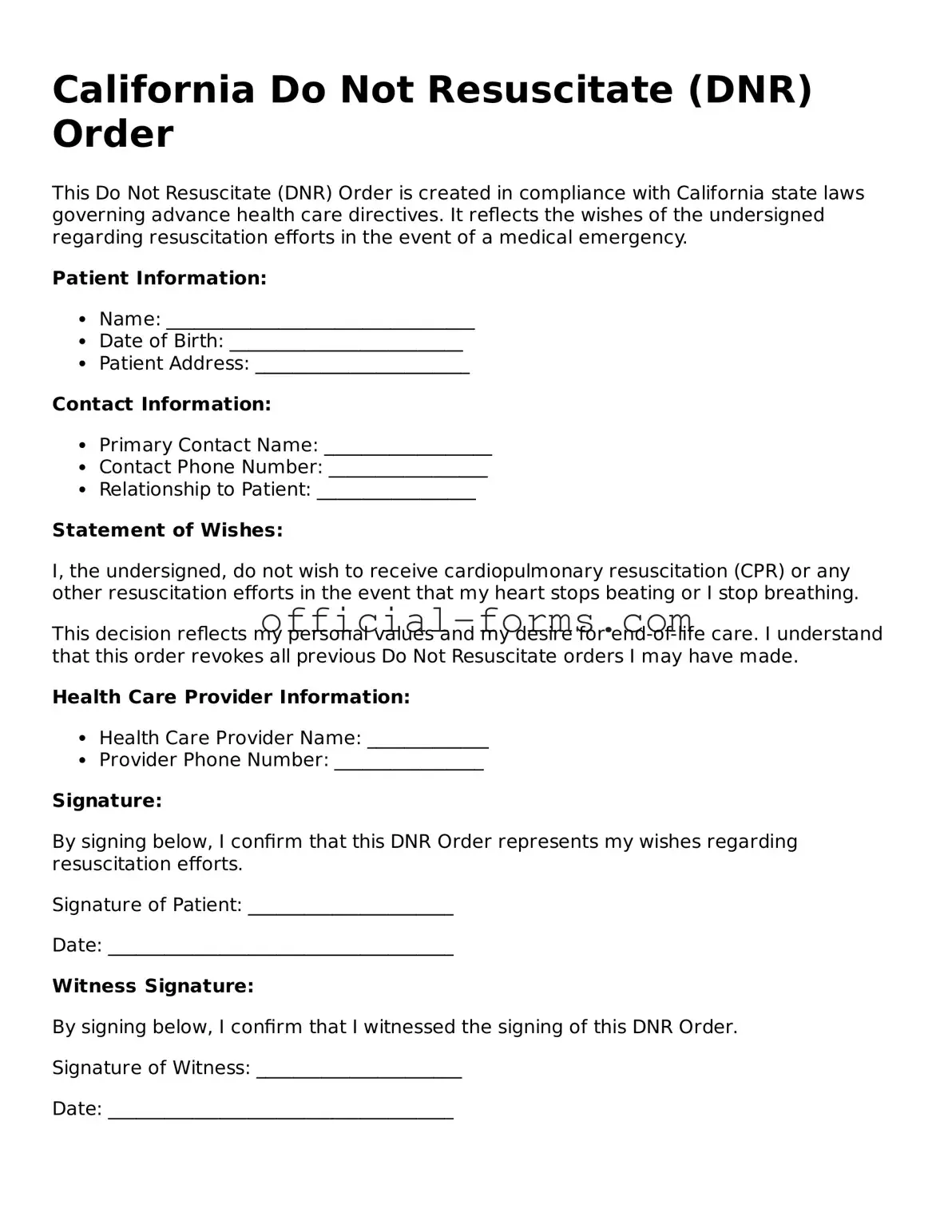When individuals complete the California Do Not Resuscitate (DNR) Order form, several common mistakes can lead to confusion or unintended consequences. Understanding these pitfalls is essential for ensuring that the form accurately reflects a person's wishes regarding medical treatment in emergencies.
One frequent error is failing to provide the necessary signatures. Both the patient and a witness must sign the form for it to be valid. Omitting either signature can render the document ineffective, potentially leading to unwanted resuscitation efforts. In some cases, individuals may overlook the requirement for a notary, which can also invalidate the form.
Another mistake involves unclear or vague language. When filling out the form, it is crucial to be specific about the patient's wishes. General statements can lead to misinterpretation by medical personnel. Clarity ensures that healthcare providers understand the intent behind the DNR order.
Some people neglect to discuss their decisions with family members or healthcare providers before completing the form. This lack of communication can result in misunderstandings or conflicts during critical moments. Engaging in conversations about end-of-life preferences can help ensure that everyone involved is on the same page.
Additionally, individuals may fail to update their DNR orders as their health status changes. A DNR order should reflect the current wishes of the patient. Regular reviews of the document can help ensure that it remains relevant and accurately represents the patient's desires.
Another common oversight is not providing copies of the completed DNR order to relevant parties. It is essential to distribute copies to healthcare providers, family members, and the patient’s medical records. Without proper dissemination, medical teams may not be aware of the DNR status during emergencies.
Some individuals might mistakenly assume that a DNR order applies to all medical situations. In California, a DNR order specifically addresses resuscitation efforts. It does not affect other medical treatments or interventions unless explicitly stated. Understanding the scope of the DNR order is vital for both patients and their families.
Moreover, people sometimes fill out the form without considering the implications of their choices. A DNR order can have significant emotional and practical consequences. It is advisable to reflect on these implications and seek guidance if needed before making a final decision.
Lastly, individuals may overlook the importance of using the official DNR form provided by California state law. Using an outdated or incorrect version can lead to complications. Always ensure that the most current form is utilized to avoid any legal issues.
